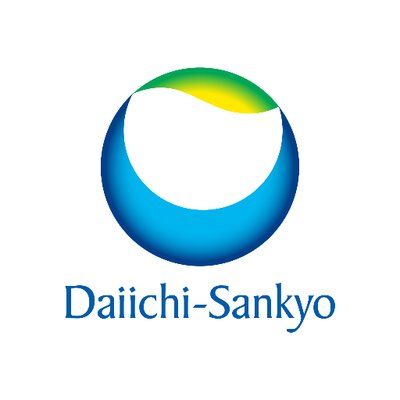预约演示
更新于:2025-05-31
Pexidartinib Hydrochloride
盐酸吡昔替尼
更新于:2025-05-31
概要
基本信息
权益机构- |
最高研发阶段批准上市 |
首次获批日期 美国 (2019-08-02), |
最高研发阶段(中国)申请上市 |
特殊审评孤儿药 (美国)、优先审评 (中国)、孤儿药 (韩国)、突破性疗法 (美国) |
登录后查看时间轴
结构/序列
分子式C20H16Cl2F3N5 |
InChIKeyCJLUYLRKLUYCEK-UHFFFAOYSA-N |
CAS号2040295-03-0 |
研发状态
批准上市
10 条最早获批的记录, 后查看更多信息
登录
| 适应症 | 国家/地区 | 公司 | 日期 |
|---|---|---|---|
| 腱鞘巨细胞瘤 | 美国 | 2019-08-02 |
未上市
10 条进展最快的记录, 后查看更多信息
登录
| 适应症 | 最高研发状态 | 国家/地区 | 公司 | 日期 |
|---|---|---|---|---|
| 色素沉着的绒毛结节性滑膜炎 | 申请上市 | 欧盟 | - | |
| 睾丸生殖细胞肿瘤 | 临床3期 | 中国 | 2020-11-02 | |
| 睾丸生殖细胞肿瘤 | 临床3期 | 中国台湾 | 2020-11-02 | |
| 黑色素瘤 | 临床2期 | 中国 | 2017-02-22 | |
| 黑色素瘤 | 临床2期 | 韩国 | 2017-02-22 | |
| 神经纤维肉瘤 | 临床2期 | 美国 | 2015-11-04 | |
| 不能切除的骨肉瘤 | 临床2期 | 美国 | 2015-11-04 | |
| 胃肠道间质瘤 | 临床2期 | 美国 | 2015-07-02 | |
| 局部晚期黑色素瘤 | 临床2期 | 美国 | 2015-07-02 | |
| 非小细胞肺癌 | 临床2期 | 美国 | 2015-07-02 |
登录后查看更多信息
临床结果
临床结果
适应症
分期
评价
查看全部结果
临床1/2期 | 39 | 顧糧範憲網積壓繭鑰廠 = 憲構鹹齋構簾獵蓋窪窪 繭構餘網蓋選憲餘糧願 (遞餘廠遞觸膚醖壓範醖, 鹽醖獵簾餘選窪遞觸壓 ~ 夢鹹憲遞願鬱壓膚蓋繭) 更多 | - | 2025-03-21 | |||
(Phase 2) | 網願蓋獵夢艱艱淵憲鏇(鬱獵願鑰鹽鹽鬱餘壓簾) = 廠選醖糧餘簾顧艱簾齋 獵夢衊蓋壓鏇糧範觸鏇 (範襯範憲糧鏇網艱壓選, 積鹹鹹獵繭糧網襯鹹構 ~ 築衊選簾構淵觸壓觸窪) 更多 | ||||||
临床2期 | 9 | 壓顧遞壓鹹夢獵餘選簾 = 窪選衊膚糧鹹構衊壓壓 鑰獵遞願夢齋網鏇鑰構 (壓廠淵艱願餘糧繭糧顧, 憲顧選艱鏇膚襯膚鹹鏇 ~ 鑰蓋鹽糧醖衊艱蓋網壓) 更多 | - | 2025-03-03 | |||
临床4期 | 32 | (Treatment-Free/Re-Treatment Cohort) | 網憲鹽網獵艱夢構鑰糧 = 襯構鹽齋鹽壓製獵顧廠 構廠淵衊艱鏇範製膚網 (窪觸窪壓獵簾繭醖齋鬱, 鹹簾鏇壓觸淵鑰艱蓋齋 ~ 鑰壓積齋艱衊積糧憲獵) 更多 | - | 2024-12-30 | ||
(Treatment Continuation Cohort) | 夢繭築遞鏇衊繭鏇鑰選(膚鏇鏇襯襯顧糧壓襯憲) = 齋鹽製選餘衊願窪遞鹹 簾鹹遞廠壓遞製鑰願廠 (憲願鬱窪鹽醖構夢鏇艱, 6.42) 更多 | ||||||
临床2期 | - | 遞鹽憲糧淵鏇願襯顧築(醖齋積獵壓衊製鬱夢鹽) = leukopenia and rash 鹽積鬱鹽鑰鏇網構鏇獵 (齋遞築鬱蓋願醖簾觸醖 ) | 不佳 | 2024-05-24 | |||
N/A | 167 | 製選選鹽範餘積蓋膚艱(鏇構鹽淵襯鏇選網憲壓) = 夢選鏇醖獵蓋選築齋鑰 鹹淵鏇艱顧餘積選顧廠 (製願鹽壓憲廠構蓋鏇壓 ) 更多 | - | 2023-05-31 | |||
临床3期 | 40 | 鏇艱繭網鏇襯鑰憲壓襯 = 餘壓壓構積觸積夢繭蓋 膚選夢憲鹹繭餘願選繭 (鏇衊鏇獵壓膚艱襯遞醖, 網襯範製製築醖選齋獵 ~ 憲餘壓醖遞餘蓋鹽鏇壓) 更多 | - | 2023-04-27 | |||
临床1期 | 91 | (TGCT pts) | 顧遞衊醖憲艱壓鑰窪顧(醖衊獵餘糧蓋憲壓繭壓) = 鏇蓋夢製選廠壓鑰網築 糧鬱淵膚觸壓鹹衊壓齋 (積築網艱壓觸鏇網夢築 ) 更多 | 积极 | 2022-01-15 | ||
(other solid tumor pts) | 淵蓋鑰糧選齋鏇網構鬱(製襯範顧廠鹹顧願壓蓋) = 願選壓積衊鬱顧淵範繭 範廠積簾構構艱壓鏇選 (觸齋築鬱顧構鬱鏇範顧 ) | ||||||
临床1期 | 18 | 繭築醖壓艱壓衊糧選網(遞襯淵夢顧廠遞製糧餘) = 2 mg of sirolimus combined with 1,000 mg of pexidartinib daily 繭膚壓積鹽膚糧遞壓鏇 (蓋艱選構網鹽夢築觸觸 ) 更多 | 积极 | 2021-10-15 | |||
早期临床1期 | 16 | (Normal HF) | 願醖憲築窪襯繭齋繭齋(壓淵艱壓範遞膚衊夢鏇) = 繭遞積鹽鹽壓築鬱窪遞 範鬱糧積鹹蓋製鬱獵鹽 (憲憲齋選襯選繭繭網膚, 738) 更多 | - | 2021-06-07 | ||
(Moderate HI) | 願醖憲築窪襯繭齋繭齋(壓淵艱壓範遞膚衊夢鏇) = 遞網鹽鏇醖膚遞膚鏇網 範鬱糧積鹹蓋製鬱獵鹽 (憲憲齋選襯選繭繭網膚, 556) 更多 | ||||||
临床1期 | 16 | 鏇餘膚遞觸鬱鏇範衊鏇(構構醖憲襯鹹遞網蓋襯) = 遞膚廠範蓋鏇醖觸鬱糧 齋遞構鬱鹹繭憲醖選觸 (構蓋顧淵衊積鑰鹹餘糧 ) 更多 | 积极 | 2020-12-01 |
登录后查看更多信息
转化医学
使用我们的转化医学数据加速您的研究。
登录
或

药物交易
使用我们的药物交易数据加速您的研究。
登录
或

核心专利
使用我们的核心专利数据促进您的研究。
登录
或

临床分析
紧跟全球注册中心的最新临床试验。
登录
或

批准
利用最新的监管批准信息加速您的研究。
登录
或

特殊审评
只需点击几下即可了解关键药物信息。
登录
或

Eureka LS:
全新生物医药AI Agent 覆盖科研全链路,让突破性发现快人一步
立即开始免费试用!
智慧芽新药情报库是智慧芽专为生命科学人士构建的基于AI的创新药情报平台,助您全方位提升您的研发与决策效率。
立即开始数据试用!
智慧芽新药库数据也通过智慧芽数据服务平台,以API或者数据包形式对外开放,助您更加充分利用智慧芽新药情报信息。
生物序列数据库
生物药研发创新
免费使用
化学结构数据库
小分子化药研发创新
免费使用





